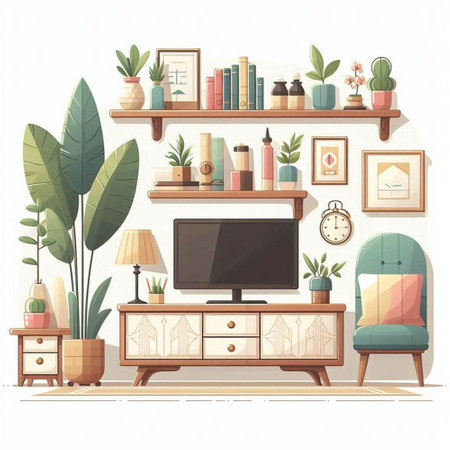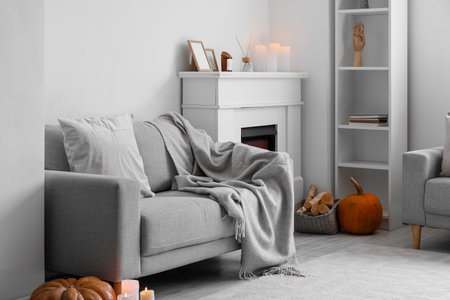Introduction: Embracing British Charm through Upcycling
There’s something wonderfully comforting about a British home, where each corner whispers stories of the past and every piece of furniture feels like it belongs. In the UK, creating a unique home isn’t just about what’s trending on the high street—it’s about blending tradition, personality, and resourcefulness. Upcycling furniture has become an increasingly popular way to infuse British character into our living spaces, especially for those keen on stretching their budgets without sacrificing style. This approach echoes age-old British values: thriftiness, celebrating individuality, and honouring heritage. Whether it’s breathing new life into a battered Ercol chair or transforming a forgotten sideboard from the local charity shop, upcycling allows homeowners to weave in layers of history and personality. It’s not just about saving money; it’s about cherishing the stories embedded in each object, making thoughtful choices that reflect both personal taste and a respect for the past. Through upcycling, British homes achieve that coveted blend of comfort, charm, and unmistakable character—creating inviting spaces that feel genuinely lived-in and uniquely ours.
2. Why Upcycling? – The Environmental and Budget Benefits
If you’re hoping to inject your home with unique British character without spending a fortune, upcycling furniture is an inspiring place to start. Not only does this approach allow you to create one-of-a-kind pieces, but it also taps into the heart of the British ‘make do and mend’ tradition—a resourceful attitude shaped by generations facing rationing, austerity, and a love for all things practical.
Upcycling is inherently eco-friendly. By giving old furniture new life, you keep usable items out of landfill and reduce the demand for new resources. The UK alone discards millions of tonnes of household waste each year—upcycling is a small, satisfying way to help reverse that trend. Consider these two approaches side-by-side:
| Approach | Environmental Impact | Budget Impact |
|---|---|---|
| Buying New Furniture | High carbon footprint; uses raw materials | Expensive; often involves delivery costs |
| Upcycling Existing Furniture | Lowers waste; minimal new resources used | Low-cost; often free or very affordable |
The financial benefits are clear as well. Instead of spending hundreds (or thousands) on brand-new pieces from big retailers, upcyclers can transform charity shop finds, family heirlooms, or even curbside cast-offs into statement furniture that feels truly personal. With just a tin of paint or some sandpaper, you can achieve dramatic results without straining your wallet.
This spirit of ingenuity and thriftiness echoes through British homes, from rural cottages to city terraces. Embracing upcycling means honouring tradition while making sustainable choices—and ending up with a home that’s as individual as you are.

3. Finding Hidden Gems: Sourcing Pre-loved Furniture the British Way
If you’re dreaming of a home that brims with British character, the secret often lies in finding those one-of-a-kind pieces that have already lived a little. Here in the UK, there’s a real joy in tracking down pre-loved furniture—each piece comes with its own history and charm, all while being easy on your wallet. So where do you begin your hunt for hidden gems?
Charity Shops: The Heart of Local Discovery
No British upcycling journey would be complete without a good rummage through local charity shops. From Oxfam to Sue Ryder, these high street staples are treasure troves for everything from solid wood chests to quirky side tables. Not only do you get unique finds at friendly prices, but every purchase supports a worthy cause—talk about double satisfaction.
Car Boot Sales: Early Bird Wins
For those who love the thrill of the hunt, car boot sales are a weekend ritual across the country. Grab a flask of tea and set your alarm early; seasoned bargain-hunters know the best deals go fast. Whether it’s a battered Victorian chair or retro kitchen units, there’s no telling what you’ll discover before breakfast.
Online Marketplaces: Modern Treasure Hunting
If you prefer browsing from your sofa, online platforms like Gumtree, Facebook Marketplace, and eBay are goldmines for pre-loved furniture. Set up alerts for keywords like “vintage,” “solid wood,” or specific brands to snap up bargains in your area before anyone else does. Don’t be shy to haggle—a bit of friendly negotiation is all part of the process here.
Freecycle and Local Giveaways: Zero-Cost Finds
For ultimate budget-friendly sourcing, check out Freecycle and community groups where people give away unwanted items for free. It’s not uncommon to score quality furniture that just needs a bit of TLC—and you save it from landfill too. Keep an open mind and act quickly; these offers don’t hang around for long.
Tip: Look Beyond Surface Flaws
When scouting for your future upcycling project, don’t let scuffs or scratches put you off—a lick of paint or new handles can work wonders. The best finds often need just a little imagination to become something truly special and uniquely British.
4. Classic British Styles to Inspire Your Upcycles
When it comes to adding a distinctive British flair to your home, upcycling offers endless creative possibilities. Drawing inspiration from some of the UK’s most beloved interior trends—think cottagecore, mid-century, and modern Victorian—lets you reimagine tired furniture while capturing the heart of classic British style. Below, we explore how these popular looks can guide your next upcycling project, making your interiors both unique and unmistakably British.
Cottagecore: Embracing the Country Spirit
Cottagecore celebrates rural life, romantic nostalgia, and a love for nature. Upcycle wooden tables or chairs with chalk paint in soft pastels (like sage green or duck egg blue), then add floral decoupage or vintage knobs. Mismatched dining chairs finished with gentle distressing can instantly create that cosy, lived-in charm typical of a British country kitchen.
Mid-Century: British Retro Reinvented
The mid-century look blends sleek lines with understated elegance—a nod to Britain’s post-war optimism. To channel this vibe, rescue teak sideboards or coffee tables from charity shops and sand them back to reveal their rich grain. Replace original handles with brass or geometric shapes for a subtle update. A quick upholstery refresh in period-appropriate fabrics like mustard or olive velvet brings these pieces right into the 21st century while honouring their heritage.
Modern Victorian: Sophisticated Yet Playful
This trend takes the grandeur of Victorian interiors—ornate detailing, deep colours—and gives it a contemporary twist. Upcycle an old chest of drawers by painting it in dramatic shades such as navy or forest green. Add metallic hardware or even wallpaper panels for an eclectic touch. Don’t forget to incorporate quirky accessories like vintage mirrors or patterned lampshades for that unmistakable sense of British individuality.
Quick Reference: Upcycling Tips for Each Style
| Style | Key Features | Upcycling Ideas |
|---|---|---|
| Cottagecore | Pastels, florals, rustic finishes | Chalk paint, decoupage, mix & match chairs |
| Mid-Century | Sleek lines, wood grains, retro hues | Sanding & staining, brass handles, velvet upholstery |
| Modern Victorian | Deep colours, ornate details, eclectic accents | Dramatic paint, metallic hardware, wallpaper inserts |
Mix & Match for True British Character
The beauty of upcycling in Britain lies in its flexibility—combine elements from different styles to reflect your personality and make your home truly one-of-a-kind. Whether you’re after the whimsical charm of cottagecore or the boldness of modern Victorian, let each upcycled piece tell part of your home’s story while saving money and reducing waste.
5. DIY Tips: Adding Character Through Distinctly British Touches
Giving your upcycled furniture a splash of British character isn’t just about practicality—it’s about celebrating iconic style and heritage in your home. Start with painting: choose muted shades like sage green, dusky blue, or soft grey, which are reminiscent of classic country cottages or Georgian townhouses. For a more dramatic look, consider deep racing green or navy, colours often found in historic British interiors.
When it comes to reupholstering, nothing says “British” quite like traditional fabrics. Hunt for tweed, tartan, or houndstooth at local markets or online fabric shops—these patterns bring warmth and texture to chairs or footstools. If you love florals, opt for chintz or William Morris-inspired designs for cushions and seats; they evoke the charm of an English garden.
To finish off your piece with a flourish, swap out standard knobs or handles for brass hardware. Brass pulls and handles add instant vintage flair and are a nod to the elegant fittings found in historic British homes. Don’t be afraid to mix in ceramic knobs with delicate hand-painted motifs, which give a whimsical yet classic touch.
For the truly detail-oriented, try stencilling a subtle motif—perhaps an understated Union Jack on the inside of a drawer, or delicate gold accents along table edges. These little details elevate your creation from merely practical to memorably British.
Lastly, remember that imperfection is part of the charm. Slightly distressed paintwork or visible brush marks only add to the lived-in authenticity that defines so many beloved UK interiors. By layering these elements thoughtfully, you create furniture that’s not only unique but deeply rooted in British tradition—without breaking the bank.
6. Showcasing Your Creations: Making Upcycled Furniture a Standout Feature
Once you’ve breathed new life into your old furniture, the next step is giving it pride of place in your home. British houses, whether they’re cosy terraces or Victorian semis, often come with unique layouts and charming quirks, making display both a challenge and an opportunity. The key is to let your upcycled pieces shine as conversation starters while still fitting seamlessly into daily life.
Finding the Perfect Spot
Consider the flow of each room and pick locations where your upcycled item can truly stand out. For instance, a bright-painted dresser could anchor a narrow hallway, welcoming guests with both storage and personality. In living rooms, an updated sideboard makes a great focal point under a bay window or beside the hearth—classic features in many British homes. If space is tight, think vertically: floating shelves or wall-mounted hooks made from reclaimed wood add both function and flair without crowding the room.
Balancing Practicality and Style
It’s tempting to style upcycled treasures with pretty trinkets and plants, but British homes thrive on practicality. Incorporate baskets for post in entryways, use trunks as coffee tables with hidden storage, or repurpose a vintage ladder as a towel rack in the loo. By combining everyday use with creative display, your handiwork becomes part of the home’s rhythm rather than just decoration.
Making It a Talking Point
Upcycled furniture naturally draws attention—after all, every piece has its own story. Don’t be shy about sharing how you sourced that Edwardian chair from a local car boot sale or gave Nana’s old bureau a lick of chalk paint. Place items where guests will notice them easily: by the front door, at the dining table, or tucked by the fireplace. Add a small framed note nearby telling its tale or keep before-and-after photos handy for curious visitors.
With thoughtful placement and practical touches, your upcycled finds won’t just fit into your British home—they’ll help define its character while sparking conversation and admiration for years to come.
7. Conclusion: A Personalised, Sustainable British Home
Embracing upcycling is more than just a way to save pennies—it’s a creative journey that brings warmth and individuality to your living space. By breathing new life into old furniture, you’re not only curating a home full of British character, but you’re also helping to reduce waste and promote sustainability. Whether it’s a timeworn sideboard from a car boot sale or a battered chair found at the local charity shop, every piece has the potential to become something special with a little vision and effort. Upcycling allows you to celebrate classic British styles—think cosy cottage charm, understated modernity, or even quirky vintage flair—while weaving your own story into each item. The process itself is rewarding: sourcing pieces, planning their transformation, and then proudly displaying them in your home. Best of all, this approach doesn’t require a hefty budget. In fact, the greatest treasures are often those found unexpectedly and restored with care and creativity. So go ahead—pick up that paintbrush or polish those handles. By embracing upcycling, you’ll create a space that’s truly yours: practical yet personal, stylish yet sustainable, and unmistakably British in spirit.


